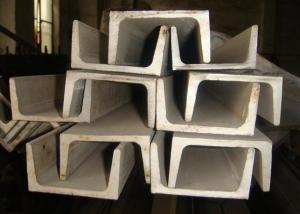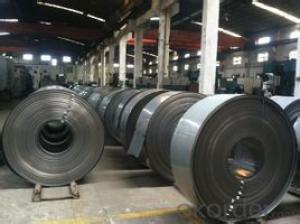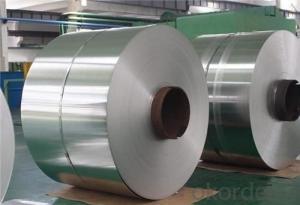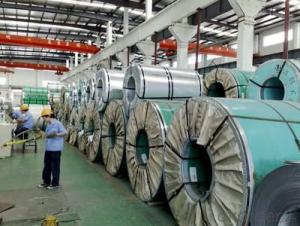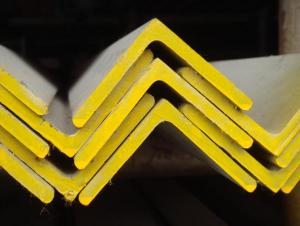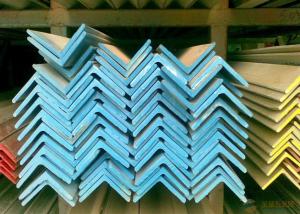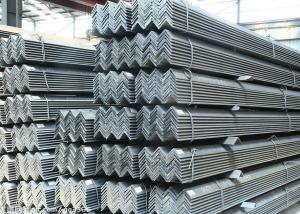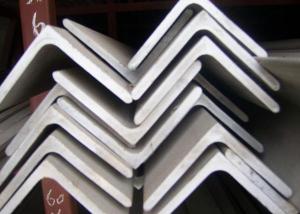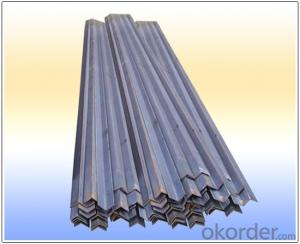GALVANIZED STEEL ENGLE BAR EQUAL STEEL BAR UNEQUAL STEEL BAR JIS GB
- Loading Port:
- Tianjin
- Payment Terms:
- TT OR LC
- Min Order Qty:
- 100 m.t.
- Supply Capability:
- 4000 m.t./month
OKorder Service Pledge
OKorder Financial Service
You Might Also Like
Product Description:
Specifications of Galvanized Angle Steel
Galvanized Angle Steel Zinc Thickness: 15--80μ
Hot Galvanized Angle Steel ss400
Sizes: 25*25~250*250mm
Grades: SS400,SS540,A36
1. Invoicing on theoretical weight or actual weight as customer request
2. Length: 6m
3. Sizes:
HOT DIPPED GALVANIZED EQUAL ANGLES SIZES |
| ||
a(mm) | a1(mm) | thickness(mm) | length |
25 | 25 | 2.5---3.0 | 6M |
30 | 30 | 2.5---4.0 | 6M |
38 | 38 | 2.5 | 6M |
38 | 38 | 3.0---5.0 | 6M |
40 | 40 | 3.0---6.0 | 6M |
50 | 50 | 3 | 6M |
50 | 50 | 3.7---6.0 | 6M |
60 | 60 | 5.0---6.0 | 6M |
63 | 63 | 6.0---8.0 | 6M |
65 | 65 | 5.0---8.0 | 6M |
70 | 70 | 6.0---7.0 | 6M |
75 | 75 | 5.0---10.0 | 6M |
80 | 80 | 6.0---10.0 | 6M |
90 | 90 | 6.0---10.0 | 6M |
100 | 100 | 6.0---12.0 | 6M |
120 | 120 | 8.0-12.0 | 6M |
125 | 125 | 8.0---12.0 | 6M |
130 | 130 | 9.0-12.0 | 6M |
140 | 140 | 10.0-16.0 | 6M |
150 | 150 | 10---15 | 6M |
160 | 160 | 10---16 | 6M |
180 | 180 | 12---18 | 6M |
200 | 200 | 14---20 | 6M |
5. PROCESS: HOT-DIP GALVANIZATION of Galvanized Angle Steel
Hot-dip galvanization is a form of galvanization. It is the process of coating iron, steel or aluminium with a layer of zinc by immersing the metal in a bath of molten zinc at a temperature of around 860 °F (460 °C). When exposed to the atmosphere, the pure zinc (Zn) reacts with oxygen (O2) to form zinc oxide (ZnO), which further reacts with carbon dioxide (CO2) to form zinc carbonate (ZnCO3), a usually dull grey, fairly strong material that stops further corrosion in many circumstances, protecting the steel below from the elements. Galvanized steel is widely used in applications where corrosion resistance is needed, and can be identified by the crystallization patterning on the surface (often called a "spangle").
Usage & Applications of Galvanized Angle Steel
Galvanized steel can be welded; however, one must exercise caution around the resulting zinc fumes. Galvanized steel is suitable for high-temperature applications of up to 392 °F (200 °C). The use of galvanized steel at temperatures above this will result in peeling of the zinc at the inter metallic layer. Electrogalvanized sheet steel is often used in automotive manufacturing to enhance the corrosion performance of exterior body panels; this is, however, a completely different process which tends to achieve lower coating thicknesses of zinc.
Like all other corrosion protection systems, galvanizing protects steel by acting as a barrier between steel and the atmosphere. However, zinc is a more electronegative metal in comparison to steel, this is a unique characteristic for galvanizing which means that when a galvanized coating is damaged and steel is exposed to the atmosphere, zinc can continue to protect steel (often within an annulus of 5 mm above which electron transfer rate decreases)..
Packaging & Delivery of Galvanized Angle Steel
1. Packing: it is nude packed in bundles by steel wire rod
2. Bundle weight: not more than 3.5MT for bulk vessel; less than 3 MT for container load
3. Marks:
Color marking: There will be color marking on both end of the bundle for the cargo delivered by bulk vessel. That makes it easily to distinguish at the destination port.
Tag mark: there will be tag mark tied up on the bundles. The information usually including supplier logo and name, product name, made in
If loading by container the marking is not needed, but we will prepare it as customer request.
4. Transportation: the goods are delivered by truck from mill to loading port, the maximum quantity can be loaded is around 40MTs by each truck. If the order quantity cannot reach the full truck loaded, the transportation cost per ton will be little higher than full load.
5. Delivered by container or bulk vessel
- Q:How do stainless steel angles perform in coastal environments?
- Stainless steel angles are highly resistant to corrosion, making them well-suited for use in coastal environments. The presence of high levels of chromium in stainless steel alloys forms a passive protective layer on the metal's surface, preventing corrosion and rust formation. This layer acts as a barrier against the corrosive effects of saltwater, humidity, and other elements found in coastal areas. Because of their corrosion resistance, stainless steel angles are ideal for applications such as coastal construction, marine equipment, and installations near saltwater bodies. They can withstand prolonged exposure to saltwater spray, moisture, and high humidity without deteriorating or losing their structural integrity. Moreover, stainless steel angles also resist pitting and crevice corrosion, which are common problems in coastal environments. This additional resistance enhances the performance and lifespan of stainless steel angles in such settings. Additionally, stainless steel angles are known for their strength and durability. They can withstand the harsh conditions associated with coastal environments, including strong winds, saline air, and abrasive particles carried by the wind. This inherent strength ensures that the angles maintain their structural integrity and do not deform or fail under these circumstances. In conclusion, stainless steel angles excel in coastal environments due to their high corrosion resistance, strength, and durability. They can withstand the corrosive effects of saltwater, humidity, and other coastal elements, making them a dependable choice for various applications in these settings.
- Q:What are the standard sizes of stainless steel angles?
- The standard sizes of stainless steel angles vary, but commonly range from 25mm x 25mm to 100mm x 100mm in dimensions.
- Q:Are stainless steel angles available in different colors?
- No, stainless steel angles are typically not available in different colors as stainless steel has a natural silver color that is maintained throughout its composition.
- Q:What are the dimensions available for stainless steel angles?
- Stainless steel angles are available in a variety of dimensions to suit different applications and requirements. The dimensions typically refer to the length and thickness of the angle. In terms of length, stainless steel angles can range from standard lengths of 20 feet or 6 meters to custom lengths depending on the manufacturer and supplier. The length of the angle can be tailored to meet specific project requirements, allowing for flexibility in design and installation. Regarding thickness, stainless steel angles come in various thicknesses or gauges. Common thicknesses include 1/8 inch (3.2 mm), 3/16 inch (4.8 mm), 1/4 inch (6.4 mm), 3/8 inch (9.5 mm), and 1/2 inch (12.7 mm), among others. The choice of thickness depends on the load-bearing capacity needed for the application. Additionally, the dimensions of stainless steel angles can also vary in terms of leg lengths or sizes. The legs are the two sides of the angle that form the L-shape. Common leg lengths include 1 inch (25.4 mm), 1-1/2 inches (38.1 mm), 2 inches (50.8 mm), 3 inches (76.2 mm), and 4 inches (101.6 mm), but there are many other leg lengths available. It is important to note that the specific dimensions of stainless steel angles may vary depending on the manufacturer or supplier. Therefore, it is advisable to consult the product specifications or contact the manufacturer directly to obtain accurate and up-to-date information on the available dimensions.
- Q:Are stainless steel angles suitable for welding applications?
- Yes, stainless steel angles are suitable for welding applications. Stainless steel angles are known for their excellent corrosion resistance and high strength, making them ideal for various welding projects.
- Q:What is the maximum weight capacity of stainless steel angles?
- Various factors, including the angle's dimensions, the grade of stainless steel, and the specific application, influence the maximum weight capacity of stainless steel angles. Typically, these angles possess exceptional load-bearing capabilities and high tensile strength, rendering them suitable for heavy-duty purposes. Nevertheless, it is crucial to refer to manufacturers' engineering specifications or reference materials to accurately ascertain the precise maximum weight capacity for a particular stainless steel angle.
- Q:What are the fatigue resistance properties of stainless steel angles?
- Stainless steel angles have excellent fatigue resistance properties. Due to their high strength and durability, stainless steel angles can withstand repetitive loading and cyclic stress without experiencing significant fatigue failure. This is primarily attributed to the unique composition of stainless steel, which includes a high percentage of chromium, nickel, and other alloying elements that enhance its corrosion resistance and mechanical properties. Additionally, stainless steel angles are often heat-treated, further improving their fatigue resistance. These properties make stainless steel angles a preferred choice in applications where cyclic loading and fatigue are major concerns, such as structural components in buildings, bridges, and machinery.
- Q:How do stainless steel angles contribute to the overall sustainability of a structure?
- Stainless steel angles play a significant role in enhancing the sustainability of a structure in multiple ways. Firstly, the exceptional durability and longevity of stainless steel are well-known. This material exhibits high resistance to corrosion, enabling it to withstand harsh environmental conditions and minimizing the need for frequent replacements or repairs. As a result, the overall environmental impact associated with the production, transportation, and disposal of construction materials is reduced. Moreover, stainless steel angles are entirely recyclable, making them an eco-friendly choice for construction projects. When their lifespan ends, these angles can be easily recycled without compromising their properties or quality. This approach reduces the demand for new raw materials and minimizes waste generation within the construction industry. Additionally, stainless steel is an environmentally conscious material as it does not release any harmful chemicals or gases during its production or use. It is free from toxic substances like lead, mercury, or cadmium, ensuring the safety of both human health and the environment. This aspect is particularly crucial in sustainable construction practices, where the emphasis lies in minimizing the ecological footprint of buildings. Furthermore, stainless steel angles possess excellent fire resistance properties, thereby enhancing the safety and sustainability of a structure. They do not burn or emit toxic gases when exposed to fire, thereby reducing the risk of flame spread and limiting potential damage to the building and its occupants. Lastly, stainless steel angles require minimal maintenance, further contributing to the sustainability of a structure. Given their resistance to corrosion, staining, and weathering, stainless steel angles do not necessitate frequent cleaning or surface treatments. Consequently, the consumption of water, energy, and chemical cleaning products is reduced. In conclusion, the incorporation of stainless steel angles into construction projects promotes overall sustainability by providing durability, recyclability, low environmental impact, fire resistance, and low maintenance requirements. By utilizing stainless steel angles, we can construct sustainable buildings that are long-lasting, safe, and environmentally friendly.
- Q:How do stainless steel angles contribute to earthquake resistance in construction?
- Stainless steel angles contribute to earthquake resistance in construction by providing structural strength and stability. Due to their high tensile strength and corrosion resistance, stainless steel angles can effectively withstand the lateral forces and vibrations caused by earthquakes. They are commonly used as reinforcement elements in building frames and structural systems, helping to distribute the seismic loads and minimize the risk of structural failure during an earthquake. Additionally, stainless steel's durability and low maintenance requirements make it a reliable choice for long-term earthquake resistance in construction.
- Q:Can stainless steel angles be used in solar panel installation?
- Yes, stainless steel angles can be used in solar panel installation. Stainless steel is a durable and corrosion-resistant material, making it suitable for outdoor applications such as solar panel mounting. Stainless steel angles provide structural support and stability to solar panels, ensuring they are securely mounted and able to withstand various weather conditions. Additionally, stainless steel's resistance to rust and corrosion ensures the longevity and reliability of the solar panel installation.
1. Manufacturer Overview |
|
|---|---|
| Location | |
| Year Established | |
| Annual Output Value | |
| Main Markets | |
| Company Certifications | |
2. Manufacturer Certificates |
|
|---|---|
| a) Certification Name | |
| Range | |
| Reference | |
| Validity Period | |
3. Manufacturer Capability |
|
|---|---|
| a)Trade Capacity | |
| Nearest Port | |
| Export Percentage | |
| No.of Employees in Trade Department | |
| Language Spoken: | |
| b)Factory Information | |
| Factory Size: | |
| No. of Production Lines | |
| Contract Manufacturing | |
| Product Price Range | |
Send your message to us
GALVANIZED STEEL ENGLE BAR EQUAL STEEL BAR UNEQUAL STEEL BAR JIS GB
- Loading Port:
- Tianjin
- Payment Terms:
- TT OR LC
- Min Order Qty:
- 100 m.t.
- Supply Capability:
- 4000 m.t./month
OKorder Service Pledge
OKorder Financial Service
Similar products
New products
Hot products
Hot Searches
Related keywords







